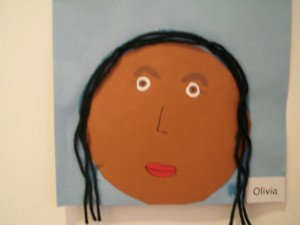 At seven years old, Olivia is beginning to understand the meaning of the civil rights movement in this country and the importance of the work of Dr. Martin Luther King, Jr. During a recent trip to the library, she selected a book on Rosa Parks to learn more.
At seven years old, Olivia is beginning to understand the meaning of the civil rights movement in this country and the importance of the work of Dr. Martin Luther King, Jr. During a recent trip to the library, she selected a book on Rosa Parks to learn more.
“If I had been born in the olden days,” she said, “I would be a slave.”
“Why is that?” I asked.
“Because my skin is brown.”
Our conversation presented an excellent opportunity to discuss the history of slavery in this country and around the world. We agreed how ridiculous it is to enslave someone simply because they have more pigment in their skin.
I didn’t think any more about the conversation and Olivia didn’t bring it up. I assumed she had forgotten it, too. Then this past Monday, when I met my daughter after school, I was alarmed to see her walk out of her classroom bent over and shaking. I took both her hands; they were freezing cold.
“Are you sick?” I asked as I led her to a sunny spot on the playground. “What’s the matter?
Olivia started crying. That morning, her class had gone to see a play about Harriet Tubman. One of the scenes depicted a reenactment of the whipping of slaves. “What they did was so bad,” she said, gasping. “That could have been me.”
I held her close and tried to soothe her. The play would have disturbed me, too, but not in the same, personal way it did my daughter. I’m a white woman who lives, primarily, among other white people. Olivia’s experience of the world—and the way she responds to it—is completely different from mine.
After a few minutes, Olivia dried her tears and skipped across the playground toward our car. Our conversation was ended, for now.
Tags: skin color



 ShareThis
ShareThis
she is one intelligent girl and always amazes me.
She makes me think. Thanks for the comment, Kelly.
To see life through the eyes of a child is to see Truth, yes? What a compassionate little girl you have. And yes, moments like these provide challenging pause for thought. You’re doing a great job – as is Olivia.
Jessica,
Your description of Olivia’s reaction to the play made me cry too. A powerful, moving piece. And I love her picture!
Dorothy
Thanks for creading and ommenting, Maija and Dorothy. Appreciate it! The picture of Olivia is one of my favorites, too.
I am the adoptive mother of two daughters from Guatemala. They are now 20 and 18. Olivia’s experience reminded me how very hard Black History Month was for my particularly sensitive youngest daughter. She was in a predominantly white middle class school system. As she was frequently the only child of color in the classroom all eyes were on her. She was smart enough to know that American slavery wasn’t really her story but the whole thing made her so uncomfortable. She mentioned it again this February!
When they were in preschool and elementary schools, in the not so distant past, they dreaded the first week of school self portraits. They only had skin color choices of fleshy pink and dark brown, nothing that came close to their beautiful golden tan skin.
Just wait until they have to do those genealogy reports . . . . . .
Thanks so much for sharing your story, Susan. Very interesting that your daughter mentioned her early experience all these years later, and that she still feels its impact. I know Olivia will remember this experience, too.
Skin tone is another subject, especially the lack of suitable crayons and markers! We finally found some “multicultural” ones, with much digging. I need to write about that, too!
The dreaded family tree. Sigh.
Thanks so much for your comments.
[…] If you’re reading this blog for the first time, you should know that I’m a white adoptive mother to two children born in Guatemala. My daughter, Olivia, is almost 9; my son, Mateo, is 6. Olivia is indigenous Maya; Mateo is what Guatemalans call “Ladino,” meaning his heritage is Hispanic. Each has brown skin; one darker, one lighter. Our family discusses skin color often; see two previous blog posts, Peach and Brown. […]